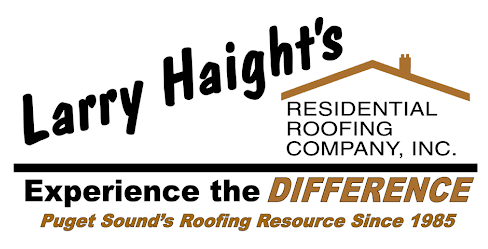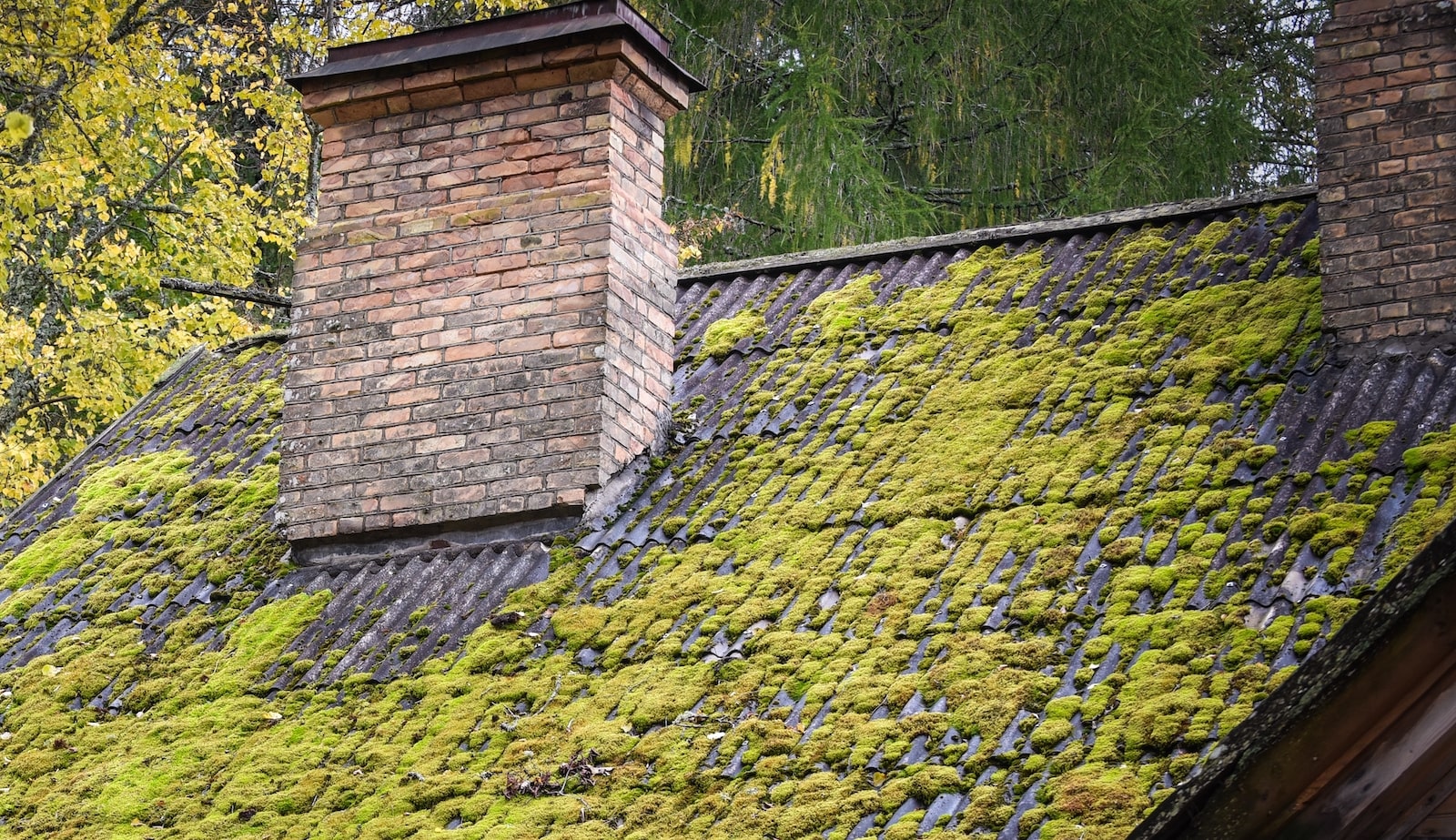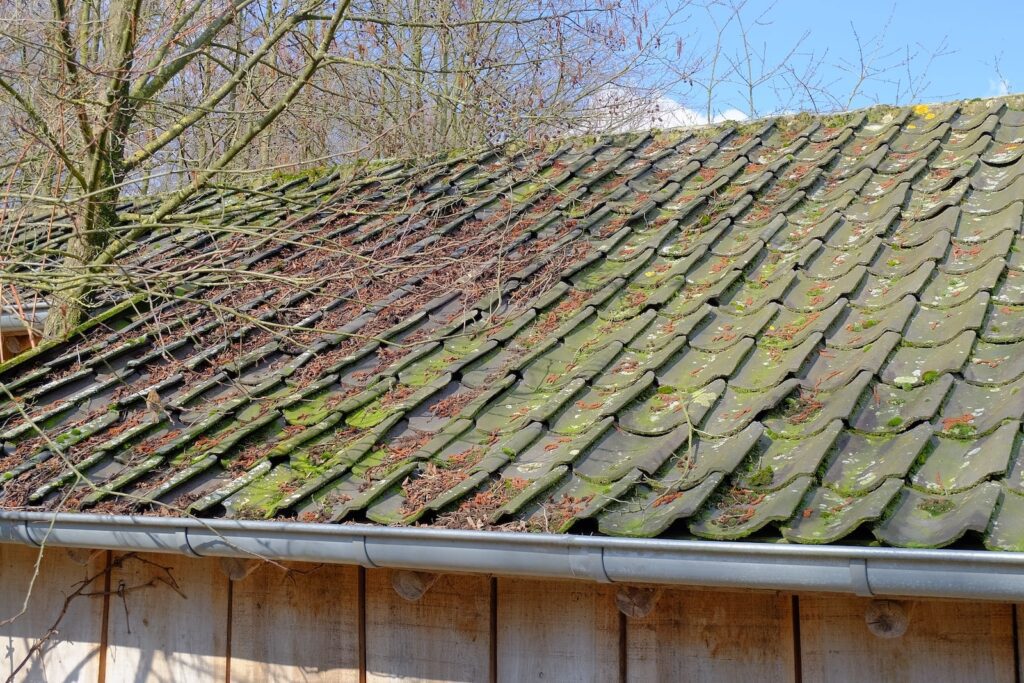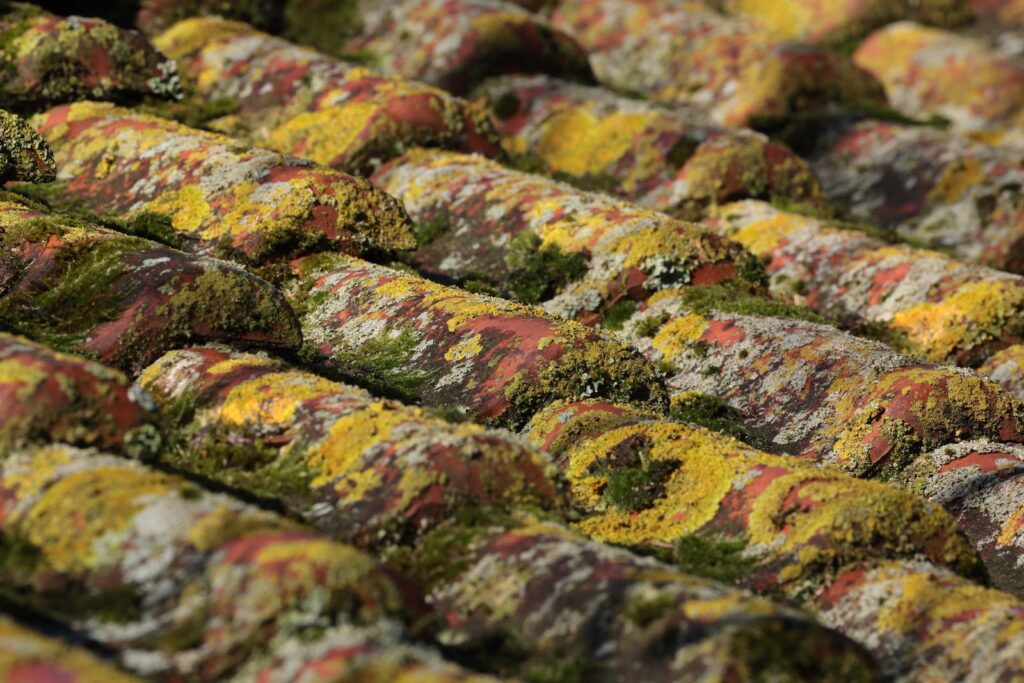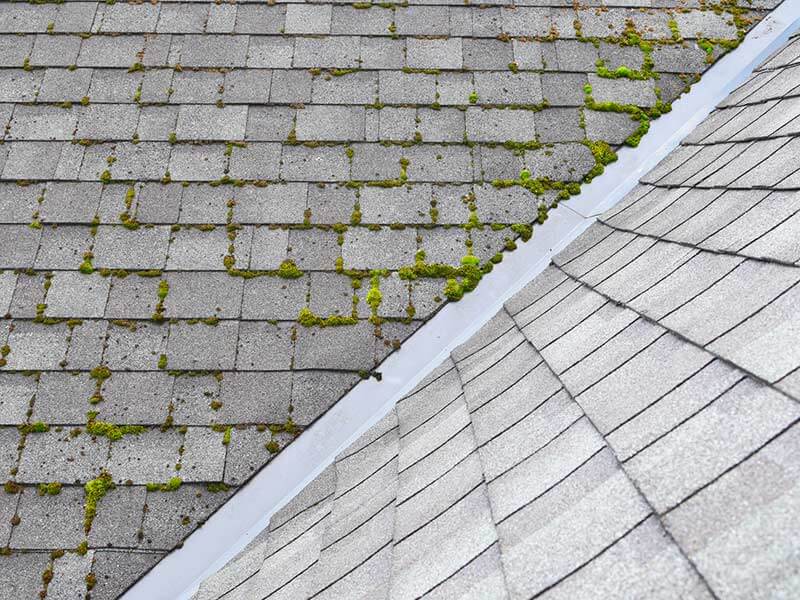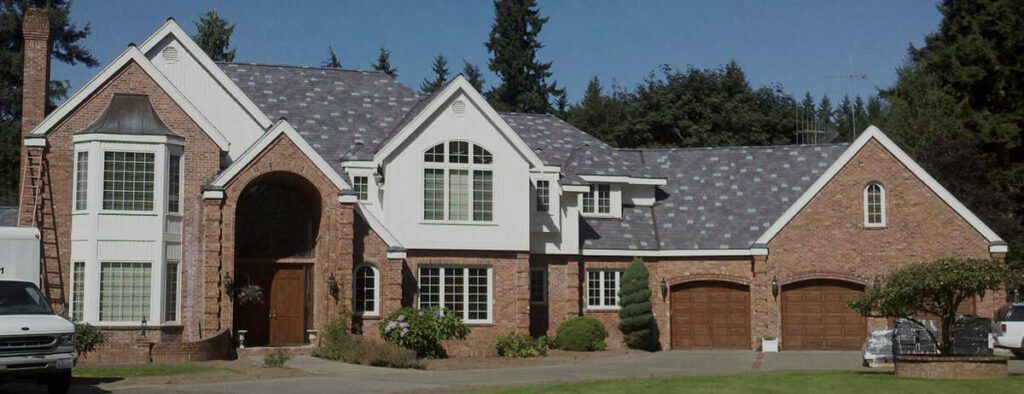That charming, verdant carpet spreading across your rooftop might look picturesque in storybooks, but in reality, moss signals trouble for your home. Despite its innocent appearance, moss is silently compromising your roof’s integrity and potentially your wallet.
Understanding the Moss Menace
Moss doesn’t just sit innocently on your roof—it actively works against it. This tenacious plant attaches itself using root-like structures called rhizoids, burrowing into cracks and crevices of your shingles. These rhizoids create a dense, sponge-like mat that absorbs and holds moisture, soil particles, and organic debris. This constant dampness accelerates the breakdown of roofing materials, especially on surfaces already weakened by age, weather, or neglect.
Over time, moss can lift shingles, compromise protective coatings, and encourage mold and rot beneath the roof’s surface. What starts as a fuzzy green patch can become a structural problem if ignored. Moss and algae can shorten a roof’s life by 10–15 years, especially for asphalt shingle roofs.
Where Moss Thrives
Moss doesn’t grow randomly—it’s a picky invader with very specific preferences. Knowing where it tends to thrive can help you identify vulnerable areas of your roof and take preventative action.
- Porous roofing materials: Asphalt shingles, cedar shakes, and clay tiles provide a textured surface for moss to anchor and flourish.
- Shady areas: North-facing sections or areas shaded by trees and taller structures receive less direct sunlight, making them ideal for moss development.
- Moisture-prone spots: Roofs with poor drainage, flat or low-pitched designs, or clogged gutters are more likely to retain moisture—prime real estate for moss.
- Humid or rainy climates: Locations like the Pacific Northwest, parts of the Northeast, and coastal regions provide perfect moss-growing conditions thanks to frequent rainfall and high humidity.
On the other hand, metal roofs are far more resistant. Their sleek surfaces and efficient drainage capabilities leave moss with little to cling to and even less water to absorb.
Spotting the Green Culprit
Early detection is key to preventing moss from causing serious roof damage. Fortunately, moss is fairly easy to identify if you know what to look for. It often begins as fuzzy, velvety green patches that form along the edges of shingles or settle between overlapping materials. These patches typically appear in areas that remain shaded and moist, especially around architectural features like chimneys, skylights, and roof valleys, where water tends to linger.
As moss continues to grow, you may notice dark streaks or stains developing on the roof surface—these can signal not only moss, but potentially algae as well. In more advanced cases, shingles may begin to curl or lift. This distortion is a red flag that moss is taking root underneath and physically pushing the shingles out of place, compromising your roof’s protective barrier.
If any of these warning signs are visible, it’s important to act swiftly. Ignoring moss growth allows it to take deeper hold, eventually leading to leaks, structural rot, and the possibility of an expensive roof replacement. A prompt response can help preserve both your roof’s longevity and your home’s overall health.
Preparation: Safety First
Before removing moss from your roof, take the necessary precautions to ensure your safety:
- Work from the top down – Always start at the roof ridge and move downward. This prevents water and debris from being pushed under the shingles, which could lead to hidden leaks or structural damage.
- Wear a safety harness – If you plan to step onto the roof, use a properly secured fall-arrest system anchored to a stable point. Even low-pitched roofs can be hazardous.
- Choose the right footwear – Wear shoes or boots with soft rubber soles that offer strong traction but won’t scuff or tear shingles. Avoid hard-soled or worn-out footwear.
- Use protective gear – Gloves, safety glasses, and a helmet can protect you from sharp debris, cleaning agents, and accidental slips.
- Enlist a helper – Have someone on the ground to stabilize the ladder, hand you tools, and assist in case of an emergency.
- Know your limits – If you’re uncomfortable with heights, unsure of the process, or lack the proper equipment, hiring a licensed roofing professional is the safest and most effective option.
Thorough preparation can prevent accidents and ensure your moss removal efforts don’t end up causing more harm than good.
Choosing Your Moss-Fighting Arsenal
The effectiveness of moss removal hinges not only on technique, but also on using the right solution for your roof type and environmental conditions. Harsh chemicals can damage roofing materials or surrounding landscaping, while the wrong product may be ineffective or even make the problem worse. Whether you opt for a DIY approach or commercial product, it’s important to match your moss-fighting formula to both your roof’s composition and the severity of the infestation.
DIY Moss Removal Options
These are affordable and accessible options for light to moderate moss buildup, though they may require repeated applications over time:
- Dish soap mixture: Combine 8 ounces of quality dish soap with 2 gallons of water. This gentle solution is ideal for asphalt shingles and poses minimal risk to nearby vegetation.
- Chlorine bleach and water (1:1 ratio): Effective against stubborn moss, but should be used cautiously. Bleach can discolor roofing and harm plants, so rinse thoroughly and avoid overspray.
- White vinegar solution: Mix 1½ to 3½ cups of white vinegar into 2 gallons of water. Vinegar is an eco-friendlier option, though it works more slowly and may be less effective on thick, established moss.
Commercial Moss Control Products
These solutions are designed for tougher infestations and offer longer-lasting results, though they vary in strength and environmental impact:
- Wet & Forget: A user-friendly, no-scrub spray that works gradually over time. It’s effective on roofs and other outdoor surfaces and is relatively gentle on most materials.
- BioAdvanced Moss and Algae Killer: Contains potassium salts of fatty acids, which target moss without the harsh effects of bleach. Suitable for use on a wide range of roofing types.
- Moss B Ware: Made from zinc sulfate monohydrate, this powder treatment kills moss on contact. However, it can be corrosive to metal and harmful to aquatic environments if rinsed into storm drains.
Before applying any product, always check the manufacturer’s recommendations and test a small area first. Also, avoid pressure washing or scrubbing aggressively, as this can strip granules from asphalt shingles or crack fragile roofing materials. With the right solution and proper care, you can eliminate moss without compromising your roof’s integrity.
Explore some of the best roof shingle cleaners in our homeowner guide.
2-Step Process to Get Rid of Roof Moss Removal
While spring is often recommended for moss treatment when the plant is actively growing, removal can be performed year-round. Summer may offer advantages as dormant moss becomes more brittle. Choose an overcast day without rain in the forecast.
Step 1: Physical Removal of Moss
- Put on safety gear and position yourself securely on your roof
- Gently spray mossy areas with water from top to bottom
- Use a soft-bristle brush with an extended handle to carefully remove loose moss
- Work methodically in sections, always brushing downward
- Critical warning: Never use pressure washers on roofing—they can severely damage shingles and force water underneath
Step 2: Chemical Treatment on Remaining Moss
- Protect surrounding vegetation and surfaces with plastic sheeting
- Apply your chosen cleaning solution according to directions
- For DIY solutions: apply, wait 25-45 minutes, scrub gently, then rinse
- For commercial products: follow the manufacturer’s specific instructions
- Some treatments require rinsing while others should remain on the roof
Maintenance & Upkeep
Moss eradication isn’t complete without an ongoing prevention strategy. Start by conducting roof inspections twice a year—once in the spring and again in the fall—to catch any early signs of regrowth or water damage.
Clear away debris such as leaves, twigs, and dirt that can trap moisture and create a breeding ground for moss. Improving drainage, especially around gutters and valleys, helps keep the roof surface dry. Additionally, trim back overhanging branches to allow more sunlight to reach shaded areas, reducing the damp conditions moss needs to thrive.
“You can clean all you want but to keep moss at bay, the environment needs to change,” says Jay Pscheidt, a plant pathologist with Oregon State University Extension Service. “You’ve got to let the sun in or it will return.”
When to Call the Professionals
Professional roof cleaning makes sense when:
- You’re uncomfortable working at heights
- Your moss problem persists despite DIY efforts
- Portions of your roof are inaccessible or particularly steep
- You want access to commercial-grade treatments
Professional services typically cost between $450-$750 depending on roof size, moss severity, and required treatments.
By taking proactive steps to combat moss, you’ll extend your roof’s lifespan, prevent leaks, and maintain your home’s appearance for years to come. That storybook moss may be charming in fairy tales, but when it comes to your home, a moss-free roof is the happiest ending.
Need Help with Moss on Your Roof?
When it comes to getting help for roof repairs or a full roof replacement in the Seattle area, trust the experts at Larry Haight’s Residential Roofing Company, Inc. Our experienced team is more than happy to advise you on the best methods to remove moss from your roof. To get in touch with a roofing professional or to schedule services, call 425-881-9771 or reach out online today!
